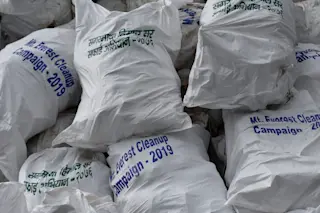Tokyo, like other major cities, has too many people, too many cars, and smog. But Koji Takeuchi thinks he can alleviate the smog problem. Takeuchi, a chemist at the National Institute for Resources and Environment in Tsukuba, wants to line Japanese highways with smog-collecting panels he and his colleagues have designed. Initial field tests have been promising, and Takeuchi says the panels should be inexpensive to install and maintain.
A bit over a foot long, the panels are made of Teflon fibers that have been mixed with carbon powder and titanium dioxide (a chemical commonly found in paint) and rolled into sheets. Sunlight striking a panel boosts electrons in the titanium dioxide to higher energy levels, making the molecules more reactive. The molecules grab oxygen and water vapor from the air and hold them on the panel. The water and oxygen then react with nitrogen oxides and sulfur oxides--smog components ...














